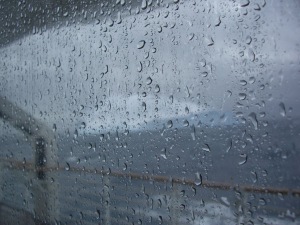Francis Drake, however, was a buccaneer, a scoundrel, a con man who buttered up Queen Elizabeth I in the days of exploration until she knighted him, a non-gentleman who is still reviled in South America even though he was the first to see and describe the meeting of the Atlantic and the Pacific, the path over which we now travel. He had the curiosity to notice that the colors of the two oceans were different and so could tell where they merged. I can see why, though, this unruly passage was named for him. It pirates your enthusiasm to go to Antarctica by the seas.
Why the rough waters? I’m summarizing from the morning report: The ocean area from 40 degrees South latitude to near the Antarctic Circle has the strongest sustained westerly winds anywhere on earth. These southern latitudes, known as the “roaring forties”, “furious fifties” and “screaming sixties”, encompass westerly winds that sweep uninhibited around the earth causing massive amounts of water to move east to west, more than 35 million gallons of water per second which is four times the rate of the Gulf Stream. The highest frequency of gales is reported between Longitude 20 degrees and 60 degrees East, just north of the Ross and Weddell Seas (where we kayaked ) and the approaches to Drake Passage. Interaction between the frigid air coming off Antarctica and the relatively warm and moist air from the lower latitude ocean areas creates cyclonic storms around the periphery of Antarctica. Hence, the rough passage.
It’s our final run. Our last lean into the birthplace of the winds. The last warm muffin – a different kind each day – for the early birds who climb up to the library to see the seas at 6 a.m. The last morning position and weather update to wake us up through the PA system (No phones in the rooms.) Today we will pass another milestone, Cape Horn, and we will see our first tree in ten days. It’s actually warm outside, the sun has yawned and the seas celebrate our Endeavor.
As we make the final lunges over the waves while various styles of albatross and petrols swarm around us like bridesmaids at a wedding, I realize finally, that all those names and dates I learned sixty years ago in primary school, the tales of the men who explored earth, are now real. We’ve covered some of their paths. We have learned about their pain and hardships. We’ve felt some of their fears. These were men of spirit and courage like the Sherpas who take climbers up Mt. Everest today or the adventurer Jon Bowermaster, a National Geographic naturalist on this trip, who is the first to kayak the seven seas. His purpose, he said, is to look at the health of the seas and the lives of the people who depend upon them.
If you want a definition of extreme courage, read about the men who sought the Arctic Grail: Norwegian Amundsen who in 1912 was the first to make it to the South Pole (slaughtering his 90 sled dogs en route) and Englishman Robert Falcon Scott who raced Amundson but came in second, then his entire party died in the cold return only 11 miles from safety (he too slaughtered his dogs, 223 of them, and the pack ponies he brought from England – both men felt the animals were too much responsibility on their pursuits); and even Dick Bass who was the first to summit the highest peaks on all seven continents; in Antarctica it is Mt. Vincent Massif at 16,073 feet.
These exploring warriors, forever embedded in the annals of history, give us an invitation to show courage, take a risk, to trust what God has put in the spirits of men and women. It’s the Moses in each of us. These are the measurements of a soul, whether we cannot do it, fail in our efforts, or are the champions. It’s the doing that counts. Having the dream. Sharing that dream with those who can only dream. Taking that first step in faith and breathing the pure air of a miracle.


